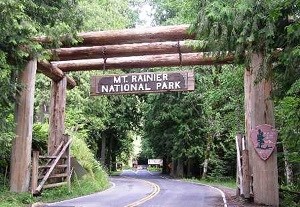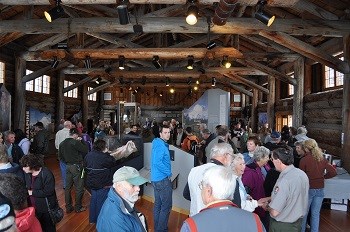Purpose of Mount Rainier National ParkMount Rainier National Park exists to protect and preserve unimpaired the majestic and iconic Mount Rainier along with its natural and cultural resources, values, and dynamic processes. The park provides opportunities for people to experience, understand, and care for the park environment, and also provides for wilderness experiences and sustains wilderness values.

NPS photo A brief description of Mount Rainier National ParkMount Rainier National Park is located in west-central Washington, on the western slope of the Cascade Range. There are 236,381 acres within the park's boundaries, 97% of which is classified as wilderness. The park is about 65 miles southeast of the Seattle-Tacoma metropolitan area and 65 miles west of Yakima. Elevations in the park extend from about 1,700 feet above sea level to 14,410 feet at the summit of Mount Rainier. Between 1.5 and 2 million people visit the park each year. The focal point of the park is a towering, snow and ice covered volcano, which is a prominent landmark in the Pacific Northwest and the tallest volcano in the United States outside of Alaska. The base of the volcano spreads over approximately 100 square miles. An average of 643 inches (16.3 m) of snow falls at Paradise (5,420 feet elevation) each year, helping to create the largest glacier system in the lower 48 states. Around 10,000 climbers come from around the world each year to attempt the summit. The lower slopes of the mountain preserve some of the last remnants of the vast old growth forests that once blanketed the region. The northwest corner of the park contains a temperate rainforest receiving over 90 inches of rain per year. Mid-elevation meadows offer spectacular wildflower displays in summer and a wonderland of snow recreation in winter. There are over 260 miles of trails in the park, including the 93-mile Wonderland Trail that circles the mountain. Congress recognized the special nature of Mount Rainier when it established the area as a national park on March 2, 1899. It is the fifth oldest national park. Here is a short history of Mount Rainier National Park of how Mount Rainier became a national park. For those who are interested in the more detailed history of Mount Rainier from its prehistoric days until the late 1990s, an excellent source is Wonderland: An Administrative History of Mount Rainier National Park. 
NPS/Kevin Bacher Who comes to the park?A 2012 survey by the University of Idaho over 7 days in August gives us some interesting details about the typical park visitor. Here are a few highlights:
Source: Manni, M. F., Y. Le, and S. J. Hollenhorst. 2013. Mount Rainier National Park visitor study: Summer 2012. Natural Resource Report NPS/NRSS/EQD/NRR - 2013/376. National Park Service, Fort Collins, Colorado. |
Last updated: January 27, 2025
